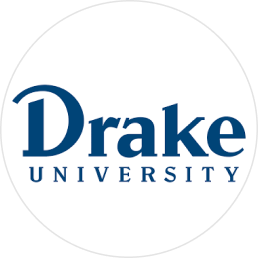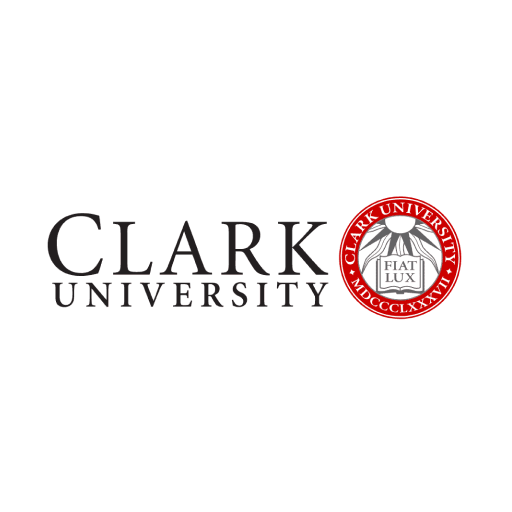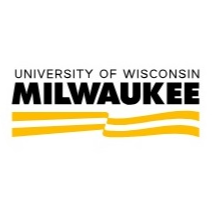
Home > Study in USA > Universities in USA > Drake University
Drake University Des Moines USA 2025
 Des Moines, Iowa, USA
Des Moines, Iowa, USA
Drake University Overview
Drake University is recognized as one of the finest universities for experiential learning. As a midsize, private university in Des Moines, Iowa, Drake offers students the benefits and resources of a larger institution with the advantages of intimate class sizes and close personal relationships.
Confronted with declining economic conditions, the Disciples of Christ in Iowa were faced with the decision to move their established Oskaloosa College, the first Christian college founded in Iowa, to another location.
In 1881, a zealous group led by George Thomas Carpenter journeyed to Des Moines where they found support for their proposed move. In March 1881, bolstered with a $20,000 pledge from General Francis Marion Drake of Centerville, Iowa, the educational institution became a reality. In gratitude, the University’s trustees named their institution after Drake, a Civil War general, former Iowa governor, banker, railroad builder and attorney.
This was Drake University’s modest beginning. Its founders dreamed of an institution that was broad-based and liberally nonsectarian. To establish the educational climate in which the University would operate, they issued the following statement:
‘‘This University has been designed upon a broad, liberal and modern basis. The articles of incorporation provide that all its departments shall be open to all without distinction of sex, religion or race. In its management and influence, it will aim at being Christian, without being sectarian.’’
While corporate affiliation with the Disciples of Christ was eventually terminated, the University continues to be guided by this statement of nondiscrimination and the progressive vision of its founders.
During the administration of Drake’s first president and chancellor, George T. Carpenter (1881-1893), the University established itself as an integral part of a young and growing community in the world’s richest agricultural area. In 10 years, it boasted of eight departments, 53 teachers and more than 800 students — more than tenfold the number of students enrolled during its first semester in 1881. In 1888, a University plan was developed that separated the departments into colleges.
Upon the death of President Carpenter, Barton O. Aylesworth was named acting chancellor and served until 1897, when William Bayard Craig became chancellor. Subsequently led by President Hill McClelland Bell (1902-1918), Drake expanded its academic programs and established new ones as needed.
An outstanding educator and administrator at Drake University and in the state of Iowa, President Bell led Drake through a major building program and the economic difficulties that began with the outbreak of World War I in 1914. Cole Hall, which is now the Office of Admission, was dedicated in 1904; Memorial Hall was built in 1905; Carnegie Hall was erected in 1908; and an addition to Howard Hall was completed in 1909. Cole, Carnegie and Howard halls now are listed on the National Register of Historic Places along with Drake’s main administration building, Old Main.
President Bell also fostered a top faculty trained in scholarship, dedicated to teaching and committed to maintaining a high standard of academic achievement.
The year 1893 marked the advent of organized, planned sports at Drake. John L. Griffith, who became coach and director of athletics in 1908, accelerated the growth of athletics at the University. The D Club, which recognizes athletic letterwinners, was organized that year. The Drake teams, which had been called Ducklings, Drakes, Ganders and even Tigers, became the Drake Bulldogs.
Coach Griffith made his greatest contribution to the University in 1910 when he organized America’s Athletic Classic, the Drake Relays. Now one of the largest university/college track and field meets in the world, the Relays also features a week of fun campus activities, entertainment and other events.
With the end of World War I, Drake University’s fifth president, Arthur Holmes (1918-1923), turned to peacetime planning. He set up a psychological clinic, established new departments and used an elementary school as a practice school for prospective teachers. He also recognized and emphasized the need for student residences.
Daniel Walter Morehouse served as Drake’s president from 1922 to 1941. Under his leadership, the University constructed new student residences and classroom facilities to meet demands of growing student enrollment. A Phi Beta Kappa chapter also was established.
As the University celebrated its 50th anniversary in 1931, the country was in the midst of the Great Depression. The effects were felt on campus as well. However, in 1937, the Gardner Cowles Foundation donated funds for Cowles Library, Drake’s main library. In 1966, a $1.7 million addition to the original building tripled its size.
Drake also further developed its graduate studies, which had existed at the University since 1883. President Morehouse organized a graduate division to increase the list of master’s degrees in professional fields.
Following President Morehouse’s death in 1941, the responsibility for leading the University through the chaotic period of World War II fell to President Henry Harmon (1941-1964). New and more vigorous policies governing selection and admission of students were established; the Office of the Dean of Students (now incorporated in the Office of the Provost) was created in 1945; and a community college offering evening programs for adults was established in 1946. In 1950, the College of Commerce and Finance became the College of Business Administration and, in 1962, the journalism program became the School of Journalism.
Between 1946 and 1966, 16 new buildings designed by distinguished architects Eliel and Eero Saarinen; Ludwig Mies van der Rohe; Harry Weese and Associates; and Brooks, Borg and Skiles were constructed on campus. The structures brought national attention to Drake.
Led by President Paul F. Sharp, Drake experienced rapid growth and development from 1966 to 1971. Library resources increased by more than 50 percent. The size and quality of the faculty increased. New undergraduate and graduate programs were instituted. To support these developments, a capital campaign, the Centennial Development Program, was launched.
Dr. Wilbur C. Miller became Drake’s ninth president in 1972. The Harmon Fine Arts Center opened that fall, and Olmsted Center opened in 1974. In 1973, the Olin Foundation Inc. provided a $3.3 million grant to build Olin Hall of Biological Science, which opened in 1975.
Drake constructed a new Law School classroom building, Harold G. Cartwright Hall, in 1976. The Bell Center for Physical Education and Recreation opened in late 1977. Master’s degrees in mass communication and in general studies were first offered in 1976. In 1980, the Aliber Foundation made possible the construction of Aliber Hall, the new College of Business Administration building, that opened in the fall of 1982. Amid these developments, Drake celebrated its centennial in 1981.
Dr. Michael R. Ferrari became the University’s 10th president in July 1985. Dedicated to ensuring Drake’s position as a leader in higher education, President Ferrari built upon programs already in place and instituted changes to strengthen the University.
The National Commission on the Future of Drake University was formed in 1987. Made up of 11 task forces and 330 members — including leaders from across the nation in business, education, government and the professions — and chaired by Drake alumnus and former Iowa Governor Robert D. Ray, the commission examined critically Drake’s programs, aspirations and plans. The commission presented its final report with more than 250 recommendations to the Board of Governors in June 1988.
That report served as a framework for future planning and as the cornerstone for The Campaign for Drake, a $115 million national fundraising program to advance Drake for students and society. Publicly announced on October 7, 1989, the Campaign was chaired by Madelyn M. Levitt, a Des Moines civic leader and member of Drake’s Board of Governors. On May 7, 1993, the University announced that the $115 million overall goal of the Campaign had been exceeded — more than one year ahead of its scheduled May 31, 1994, completion. At its official conclusion, the Campaign had raised more than $130 million for the University.
As part of the Campaign, the University launched in 1991 the most comprehensive construction effort on campus since the Saarinen plan of the 1940s. The William C. Knapp Center for recreation, sports and convocations and the Tennis Center opened in fall 1992. Dwight D. Opperman Hall and Law Library opened the following spring, and the new Pharmacy and Science Hall was dedicated in fall 1993.
In addition, the acoustically perfect Old Main Auditorium, listed on the National Register of Historic Places, was rededicated as Everett A. Sheslow Auditorium in January 1993. Fitch and Ingham halls were also renovated and plans were implemented for the upgrading of Cowles Library. The first phase of a campus landscaping project, Wifvat Plaza, was completed in 1993.
The University continued its proactive planning approach by creating in 1993 the National Commission II — Toward the 21st Century, chaired by distinguished Drake alumnus Benjamin B. Ullem. Working in 13 task forces, the commission’s 400 members presented nearly that many recommendations for Drake’s further advancement. Their final report helped establish priorities for Campaign Drake — Think of the Possibilities — a $190 million national fundraising effort announced on November 1, 1997. The campaign, the largest ever undertaken by a private college or university in Iowa, reached its goal on May 31, 2002.
In April 1998, the University’s Board of Governors appointed distinguished Drake alumnus Robert D. Ray as Drake’s 11th president. Known statewide and beyond for his integrity and commitment to serving others, Ray served as Iowa’s governor from 1969 to 1983 and then as president and chief executive officer of two major insurance corporations. Past chair of the University’s Board of Governors, Ray also served as interim mayor of Des Moines, Drake’s home city, in 1997.
Dr. David E. Maxwell became the University’s 12th president on May 15, 1999. Upon his arrival, he immediately began working with faculty, staff and students to clearly define the mission, values, vision and goals of Drake and to develop a long-term strategic plan for the University. Before joining Drake, Dr. Maxwell was director of the National Foreign Language Center from 1993 to 1999, and from 1989 to 1993 he was president of Whitman College in Walla Walla, WA. From 1981 to 1989 he served as dean of undergraduate studies at Tufts University, where he was also a faculty member for 10 years.
In January, 2015, Drake University announced that Earl F. "Marty" Martin would succeed President Maxwell as the University's 13th president that summer. Martin most recently served as the executive vice president of Gonzaga University. Among the many initiatives through which Martin has led the University is STEM@DRAKE, a multi-million dollar project involving the creation of several new programs and facility upgrades, kicked off by the renovation of Harvey-Ingham Hall in the summer of 2015, followed by the construction of two new buildings, the Science Connector Building and Collier-Scripps Hall, which houses the School of Education and the Mathematics and Computer Science Department and the launch of the John Dee Bright College in September, 2021, the first new college or school established at Drake in 60 years.
Drake consistently ranks among the top universities in academic reputation among more than 140 Midwest master's universities ranked by U.S. News and World Report magazine. The magazine also rates Drake as one of today’s best values in higher education, as does Peterson’s Guide to Competitive Colleges and Barron’s 300 Best Buys in College Education.
Approximately 5,300 students are enrolled in the six colleges and schools of the University: the Colleges of Arts and Sciences (including Fine Arts), Business and Public Administration, John Dee Bright, Pharmacy and Health Sciences; the Schools of Education, Journalism and Mass Communication, and Law.
USD 50000-52000
Undergraduate
University Facts
|
Established in 1881 |
|
Programmes 88 Available |
|
Total Students 4884+ |
Not sure what you are looking for?
Don’t worry, we are here to help.
Suggested Universities
World class universities waiting for you.


Iowa, USA • 43 Programmes
Tuition Fee : USD 32589 - 32589 / year
.png)
Iowa, USA • 32 Programmes
Tuition Fee : USD 40000 - 41000 / year
Top Universities in USA
Popular universities to study in USA

Illinois, USA • 236 Programmes
Tuition Fee : USD 18000 - 18500 / year






California, USA • 226 Programmes


Wisconsin, USA • 239 Programmes
Tuition Fee : USD 21700 - 30000 / year
Popular English Language Proficiency Exams
Blogs and Articles
Study in USA Blogs & Articles
Master's in Computer Science in the USA
Updated on • Apr 08,2025 05:59 PM IST • USA
Updated on • Mar 11,2025 01:18 PM IST • USA
Updated on • Feb 19,2025 12:31 PM IST • USA
Updated on • Jan 21,2025 05:46 PM IST • USA
Updated on • Jan 16,2025 03:32 PM IST • USA
Updated on • Dec 31,2024 12:39 PM IST • USA
Exams Required to Study in USA
Updated on • Dec 31,2024 12:44 PM IST • USA
Masters in Project Management in USA
Updated on • Nov 26,2024 01:15 PM IST • USA
Updated on • Nov 25,2024 03:33 PM IST • USA
How to Get a Job in USA in 2025
Updated on • Apr 07,2025 03:19 PM IST • USA
Updated on • Jul 12,2024 05:59 PM IST • USA
Cost of Living in USA for Indian Students
Updated on • Jun 07,2024 05:57 PM IST • USA
Updated on • Jun 05,2024 04:27 PM IST • USA
1 Year Master of Science (MS) in USA
Updated on • May 30,2024 05:51 PM IST • USA
How to Get a Job in USA as an Indian Student?
Updated on • May 28,2024 01:22 PM IST • USA
Top MBA Programs in USA in 2024
Updated on • May 23,2024 05:56 PM IST • USA
Crack Your F1 US Student Visa Interview with Ease
Updated on • May 17,2024 01:43 PM IST • Study in Ireland
Updated on • May 03,2024 04:23 PM IST • USA
Master of Engineering Management in USA: Universities, Eligibility Criteria, Scholarships
Updated on • Mar 14,2024 03:42 PM IST • USA
MS in USA: Best Courses, Requirements, Cost, Scholarships, Jobs & More
Updated on • Mar 14,2024 10:23 AM IST • USA









